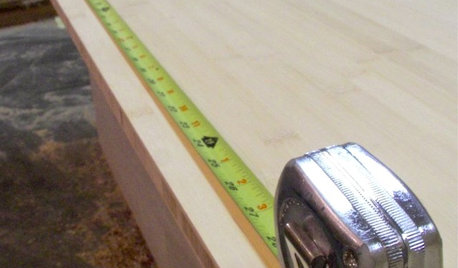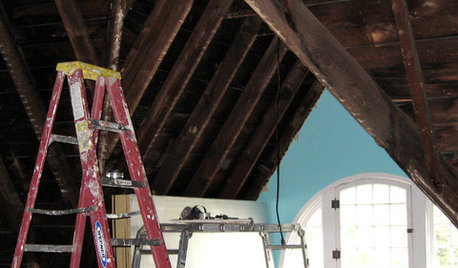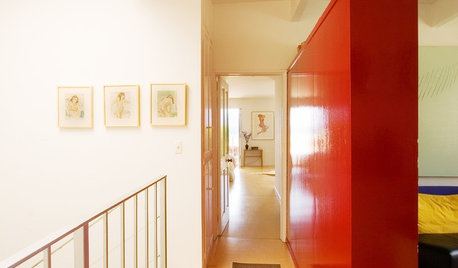Silly newbie question list
onafixedincome
13 years ago
Related Stories

SELLING YOUR HOUSE15 Questions to Ask When Interviewing a Real Estate Agent
Here’s what you should find out before selecting an agent to sell your home
Full Story
FEEL-GOOD HOMEThe Question That Can Make You Love Your Home More
Change your relationship with your house for the better by focusing on the answer to something designers often ask
Full Story
WORKING WITH PROS9 Questions to Ask a Home Remodeler Before You Meet
Save time and effort by ruling out deal breakers with your contractor before an in-person session
Full Story
WOODWORKING7 Must-Have Measuring Tools for Woodworking
Whether you're a newbie DIYer or building cabinets from scratch, using the right woodshop tools makes all the difference
Full Story
SMALL HOMESHouzz Tour: An Illinois Loft Sparks Renovation Fever
Home improvement newbies (and newlyweds) find joy and a new income source while redoing their space themselves
Full Story
REMODELING GUIDES8 Lessons on Renovating a House from Someone Who's Living It
So you think DIY remodeling is going to be fun? Here is one homeowner's list of what you may be getting yourself into
Full Story
FURNITURESmart Shopper: How to Judge Antique Furniture Quality
Pick the treasures from the trash without expert experience by learning how to evaluate antiques and what questions to ask
Full Story
MOST POPULAR10 Things to Ask Your Contractor Before You Start Your Project
Ask these questions before signing with a contractor for better communication and fewer surprises along the way
Full Story
FUN HOUZZHouzz Quiz: What's Your Decorating Style?
Answer these 9 questions to find out what decorating style suits you best
Full Story
WALL TREATMENTSPick the Right Paint Finish to Fit Your Style
The question of finish may be as crucial as color. See which of these 9 varieties suits your space — and budget
Full StoryMore Discussions








tapla (mid-Michigan, USDA z5b-6a)
jodik_gw
Related Professionals
Oatfield Landscape Architects & Landscape Designers · Dudley Landscape Contractors · Dunwoody Landscape Contractors · Mahwah Landscape Contractors · Rochester Landscape Contractors · Ronkonkoma Landscape Contractors · Thonotosassa Landscape Contractors · West Haverstraw Landscape Contractors · Gardere Window Contractors · Clark Window Contractors · Homestead Window Contractors · Meadow Woods Window Contractors · Ruskin Window Contractors · Cartersville Fence Contractors · Fair Oaks Fence ContractorsonafixedincomeOriginal Author
calistoga_al ca 15 usda 9
Loveplants2 8b Virginia Beach, Virginia
tapla (mid-Michigan, USDA z5b-6a)
mrlike2u
onafixedincomeOriginal Author
tapla (mid-Michigan, USDA z5b-6a)
meyermike_1micha
mrlike2u
onafixedincomeOriginal Author
tapla (mid-Michigan, USDA z5b-6a)
jane__ny